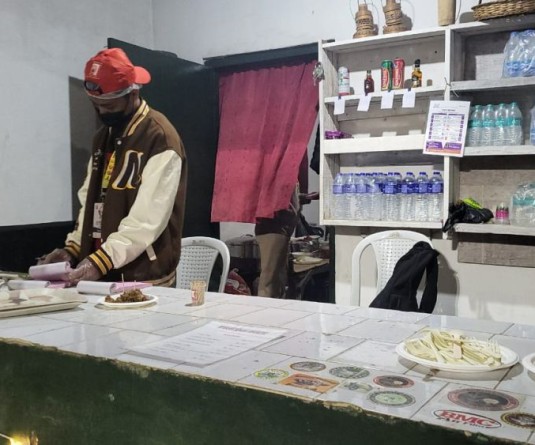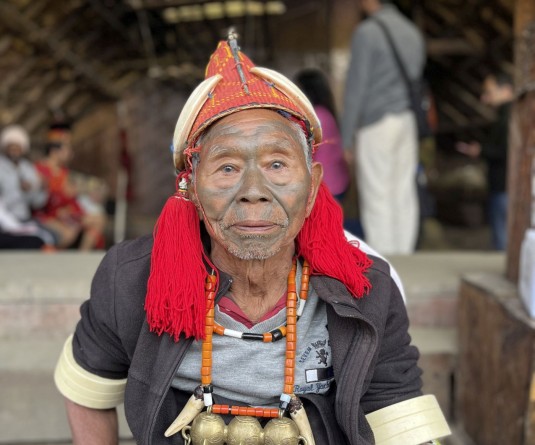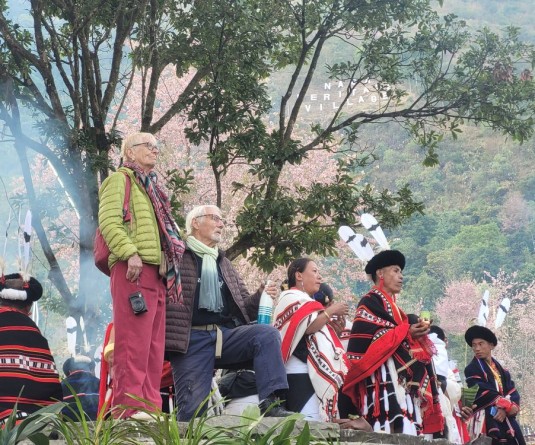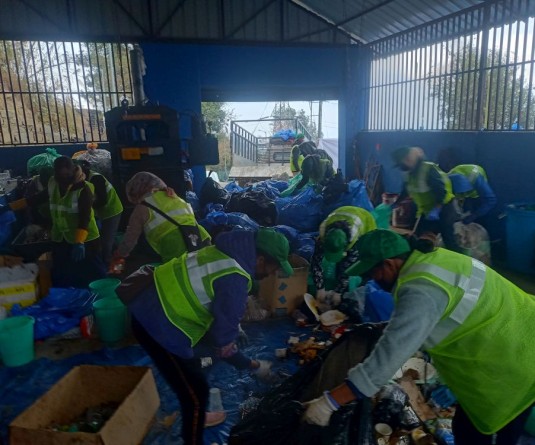Young boys carry their sibling on their backs at Lungwa Village in Mon district. Most children rather than go to school have house hold responsibilities, while their parents are out in the fields. (MExPix)

Neichü
LUNGWA (MON), Dec 4: Her name is Honglei, she lives in Lungwa village, in the land of her ancestors which is situated right at the artificially created International border of Burma and India. Her home is a world and half away from mine, Kohima. Her parents had gone to the fields in the mountains on the eastern side, which is ‘Burma’ and she was entrusted to look after 3 of her younger siblings in ‘India’. When I chatted with her, she was bathing at a running stream while her siblings and several other little children were playing beside her watchful eyes. The good news is that she and her siblings are survivors in an extremely high child mortality area. And although she is under-nourished as a six year old, she is loved and valued by her large extended family. The bad news is that she is far less likely to attend or remain in school. She will spend a life burdened with home chores, preventable diseases and poverty. She smiles at me as I ask her questions that have no answers, as if to say – Is it too much to ask for a school?
‘Every child has a right to basic education. They must have an access to clean water and health care’ – all leaders rightly advocates for this right in every possible platform. Yet, in real life, these words seem so empty and doomed.
Like anywhere else in the world, these children run around cheekily smiling and shyly expectant. I could not help but be aware of their half naked body in chilling cold weather and some with seriously awful wounds in their ears, nose and chin. What struck all of us was that every older child piggybacks a sibling and we marvel at how small and young these ‘responsible-older’ are!
There are two Government schools in this village – one run by the Burmese government (which doesn’t have a physical feature yet) and another by the Government of Nagaland- whose physical feature is in a shamefully deteriorating condition). The former one has 7 registered children and the later one has around 40 children registered. Within the few hours we spend in the village, we met at least 60 to 80 children – almost all of them were at a school going age. I ask every possible child, if he or she had been to school and the answer was a resounding No. We learnt that their local leader and politician had been to school at the age of 17, so perhaps, one day they too will make it – or could this be a wishful thinking!
The nearest private school is situated in their neighboring village, Phomching which is initiated by a few educated people of the area with the help of their local politician. This school has 90 children from 20 neighboring villages and 5 teachers. Children walk for 3 to 4 hours a day to school and back. The rugged roads are unbelievably dusty in dry season (now) and completely muddy in rainy season. The classrooms barely have a few firm benches and desk. On the contrary, the teachers we met were impressively hopeful and positive. They aspire to make this school the centre of learning and the agent of change for this region.
The Universal Primary Education, the declaration of Health for all (1978), the Education for all (1990) and the Convention on the Rights of the Child (1990) which have led to wide ranging debates and creative approaches to health and education, are good instruments for lobbying but how the upsurge of interest in these sectors are practically applied in a given situation is yet to be critically assessed. But at the moment, the need for an effective and functional primary school at Lungwa, to provide quality early childhood education should be a priority.






